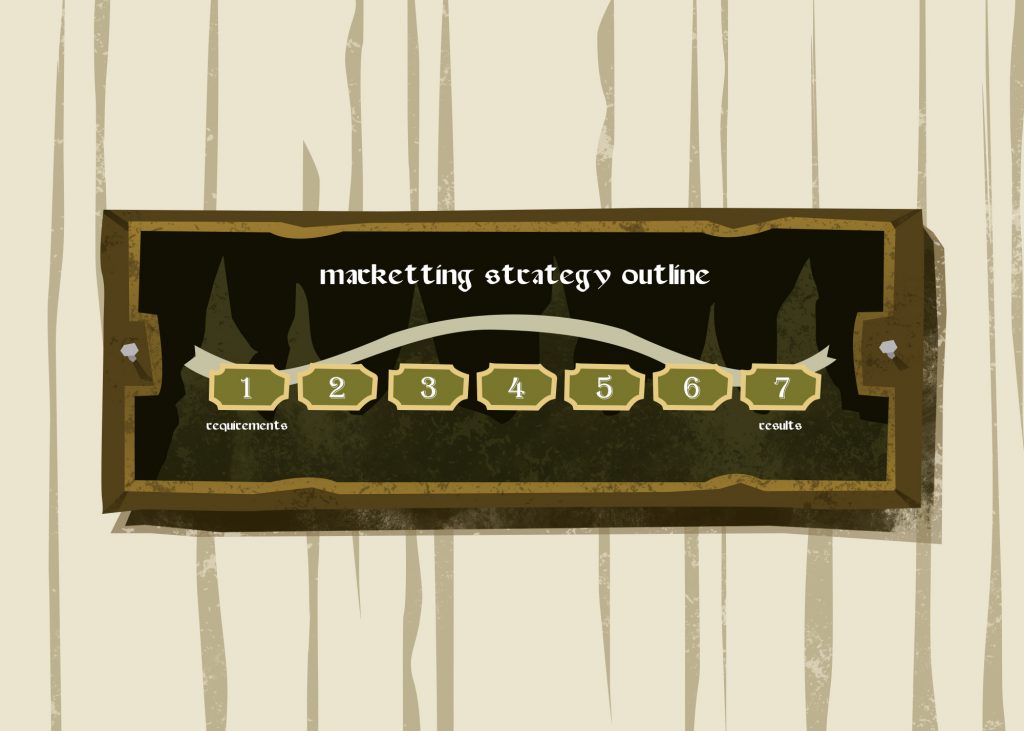Spoiler Alert! Topic Ideation Lessons from Game of Thrones
Author & Editor
Content Team Lead
Published on: Aug 9, 2017 Updated on: May 20, 2024
Table of Contents
Game of Thrones has the world hooked, Season 7 Premiere Records on the seventh season’s opening night. The mix of great storytelling, compelling characters, and DRAGONS makes a lethal combination that has everyone tuning in. Many TV shows don’t even make it past one season, yet Game of Thrones is going strong at seven! One has to wonder: how do the showrunners manage to churn out episode after episode?
As an avid Game of Thrones fan, I’ve grown to appreciate how aspects of the show translate to generating a steady stream of topics for content marketing. I definitely know how it feels to grasp at straws when it seems like every topic has been exhausted, especially if a campaign has been going on for a while. The show certainly got me looking at topic ideation from a dragon’s-eye view. It hit me like a blow to the head from the Mountain: a sustainable topic stream that aligns with our clients’ objectives can be done!
SPOILER ALERT: We’ll be discussing specific events from the show. If you haven’t been keeping up, drop this and catch up! But let’s be real here. Chances are, you’re here because you’re just as obsessed with the show as I am.
1. Kill Your Darlings


Anyone who’s seen even just the first season of Game of Thrones knows that the series can be ruthless. Lots of characters are outright killed, including the ones the plot has built up to be fan favorites. We’ll never forget you, Ned Stark.
Some of them are written off to shocking effect. And yet, if you try really look at it, character deaths communicate that these characters have already played their part in the story (whether the audience agrees or not). When you’re ideating topics for content, you have to be aware when a topic thread has run its course, or if it’s just not meant to be. Nothing is pulled from raw randomness in this industry, and no matter how much you love your topic, if it doesn’t align with your campaign’s objectives—drop it. If, after some research, you’ve established that there’s zero demand for it—drop it.
Malaysia Airlines demonstrated how failure to nip ideas that are going off-course at the bud can lead to disaster. Just a few years ago, they launched a contest that asked people to submit their bucket lists. The idea seemed OK, except that Malaysia Airlines was also reeling from two flight disasters that year where 537 people died. The comparison can’t be missed!
Video streaming giant Netflix recently cut three shows, Sense8, The Get Down, and Girlboss, to the surprise of their considerable fanbases. Netflix was such a huge financial success that it seemed to be able to fund any series, regardless of how well it does. As the company matured and more data came in, it became apparent that some shows need to face the piper.
Now, when you’re generating a constant stream of topics monthly, it’s quite easy to fall into a pattern. You’ll develop some go-to themes that you’ll revisit every month. Maybe your pattern always involves a list of hacks. It’s a deep pool to draw from, and articles about hacks can be angled towards a lot of audiences. However, one day, your SEO report indicates that your website simply has too many articles about hacks, and it’s already hurting how the pages are being read by Google. When data speaks, you better act. Cut the hacks.
Cultivate the awareness to identify if it’s time to let an idea go. Check your data and review your topic. If it doesn’t make sense, go ahead and swing that axe.
2. Always Look Back


History plays a huge part in Game of Thrones. Many of the events in the series are influenced by a rich history that characters often allude to (making great material for a prequel spin-off). In the same way, a campaign also has a rich background you should be mining for ideas. At the very least, you’ll know what content avenues have already been explored. Of course, content marketing goes far deeper, and there’s a wealth of data to reference to make your next step. Which articles performed well in the SEO arena? Which ones got great engagement on different channels? These fragments come together to provide you with a bearing to follow.
Maybe I got ahead of myself. First, do you have the documentation in the first place? According to Content Marketing Institute, a mere 32% of B2B businesses in North America have a documented content strategy. If you don’t have a history to look back on, better start on it!
In our generic lifestyle example, it’s easy enough to create a list of random topics from Google, but will these really help your campaign? Chances are, you’re just hoping for improvement—and randomness just has no place in digital. I’m not saying that a bunch of budget travel tips, fashion reports, and DIY projects won’t make good topics. It’s just that each topic has to have a purpose that’s directly drawn from historical data that proves that publishing it will strengthen your site. Maybe the last month saw a surge in DIY baby food searches. Should you go ahead and produce a baby food recipe article? Not necessarily! What does SEO have to say about it? What does your client’s marketing brief say about it? All of these (and probably a lot more) factors come together to create a very clear picture of the topics you should be writing about.
3. Create a Pop-Up Book of Intertwined Stories


One of the reasons why Game of Thrones feels so cohesive as a story is the web of relationships that tie the characters together. Two plots might not seem connected now, but the show can be relied on to connect them in a satisfying manner later on. A big chunk of the series is spent following Daenerys, who is a continent away from the cluster of kingdoms vying for the Iron Throne. As her story develops, it becomes clear that she’ll play her part in that bigger conflict.
See how you can connect separate articles together to create the basis for a new topic. Roundup posts are insanely effective and are a great way to foster a cycle of good internet karma with your peers. In the same vein, you can create compilation articles of your own content. Not only will this revive interest in your old content, your readers will certainly appreciate the convenience! Of course, both of these content types are derivatives of the controversial listicle. Unless you’ve been living under a rock, you’ve probably heard of Buzzfeed. The content superpower runs a whopping 65% of its output as lists, and nobody can contest that it’s working. Chaining little bits of the story together to form a snackable whole gets people reading.
The trick to creating this type of content is making sure that the components sound cohesive, and that can just be a matter of finding what they have in common. Let’s say you need to make an article about pet care. Go through your article database and gather the ones that involve pet products, toys, creating the right home, and so on. Before you know it, you’ll have a killer pet care topic that will make your SEO people ecstatic.
4. Have a Plan. Always.


We just talked about Daenerys Targaryen who spent the most of seven seasons an ocean away from the main conflict. She has dragons calling her mom and yet, we see her fail over and over again. At some point, my sympathy turned to frustration! The problem with Dany is she hardly ever plans. Of course, that is part of what makes her character ‘real’. There are some people who always charge blindly, much to their future dismay. However, you shouldn’t be such a person. Especially with a fresh campaign, always have a plan that’s based on your digital marketing strategy. As you know, churning out topics can be hard enough as it is. It’ll be such a waste if you charge headlong in the wrong direction. A well-thought-out content marketing plan has everything you need.
Even the most bizarre, random-seeming, but successful content is squeezed from a well-defined strategy, which is backed up by lots and lots of research. A lot of people might think that the content team for Denny’s is a bunch of clowns who’ve watched way too much Beavis and Butthead back in the day (and this may actually be true), but there’s a method to the insanity. And it’s working. 2016 saw the chain’s biggest growth in a decade.“Everybody’s trying to be relevant to millennials, but our goal is to keep our brand top of mind and entertain them so when they’re hungry, they think of Denny’s,” explains CMO John Dillon. Clearly, there’s nothing random about the way they do their marketing, and that’s why the campaign continues to churn out relevant, engaging content. There’s no drought of ideas because these guys have mapped out a winning plan.
Similarly, your content marketing plan will be a topic factory.
5. Wear Many Faces


So Arya Stark is a little girl who went through some terrible things in the course of the show, which landed her in a guild of assassins known for their ability to change their appearances. One could imagine that they’re pretty good assassins. Being able to blend into any environment is pretty handy, given their line of work.
The same can be said for ours, although maybe not as literal as changing how you look. Consider the different people who will end up looking for and reading your content. Who are you talking to? Become them.
Say you need to create content for a residential condo. Who is your target market? Newlyweds? Retirees? Expats? Professionals? Some of their needs and interests would definitely intersect, but being able to put yourself in their shoes will yield a lot of ideas. Maybe the newlyweds would be interested in a guide for picking the right unit size if they’re expecting a child. A retiree might be scouting for a nice place that’s also close to facilities like malls and hospitals. Also, knowing where your market is in the buying cycle will yield more insight on the topics you need to produce. Different people, different needs, a wealth of potential topics. Besides, being able to talk to your market segments is a must! Mercedez-Benz caught on that the Millennial generation has grown up enough to buy their cars and adapted. Identify your audience, segments, research, and empathize.
This is the basis of persona creation. In the onset of your efforts, create a profile for your target market. Research the type of people you’re talking to. Are you catering to millennials? What foods do they like? What do they love to watch on Youtube? Once you have a well-defined persona, it’ll be a lot easier to create topics that hit home.
6. Always Keep One Ear on the Ground… or on Social Media


Varys and Littlefinger know the power of a wide network, and the show does a good job of showing just how much influence one character can exert just by knowing the most information. Staying updated with your competition, or even just general trends will give you an endless supply of topics. Adversely, keeping an eye on them will also clue you in on the avenues you should avoid. You really wouldn’t want to be caught copying. Check their Facebook pages. Check all of their social media. Facebook keeps its spot on top with a whopping 85% of traffic from social media coming from the giant—the people you’re talking to are probably leaving breadcrumbs there. Time sink? Facebook might just be your most valuable resource.
Try this simple exercise: search up #GoT on X. Granted, a lot of people are already talking about Game of Thrones, but you’ll be amazed at the breadth of ways everyone is talking about Game of Thrones. Cast member sightings, spoilers, speculations—the topics practically generate themselves! Now, search up the keywords you’re targeting and get ready for a flood of inspiration. From sensible to funny to downright weird, you’ll find a wealth of ideas for just about any topic. From there, a truly unique and compelling topic that serves your brand’s objectives will be a matter of putting pieces together. The best part? X is just the tip of the iceberg. There’s Google Analytics, Facebook, Quora, online forums… each of these channels has the potential to provide the seed for your next topic.
Game of Thrones is a testament to longevity. The show is actually exploring stories not covered by the books yet! Even though the show is said to be ending on the next season, we’ll probably want to keep on watching for seven more. This isn’t an accident. A show this big costs a lot of money to make, and that can’t be left to chance. Each plot twist, each line of dialogue, all of these are influenced by very real data that are collated and analyzed by people whose job it is to make the show addictive enough for millions of people to devote hours upon hours of their lives to watch it. Do what it takes to make your own content similarly, consistently compelling. Just, probably, hold the murder.
